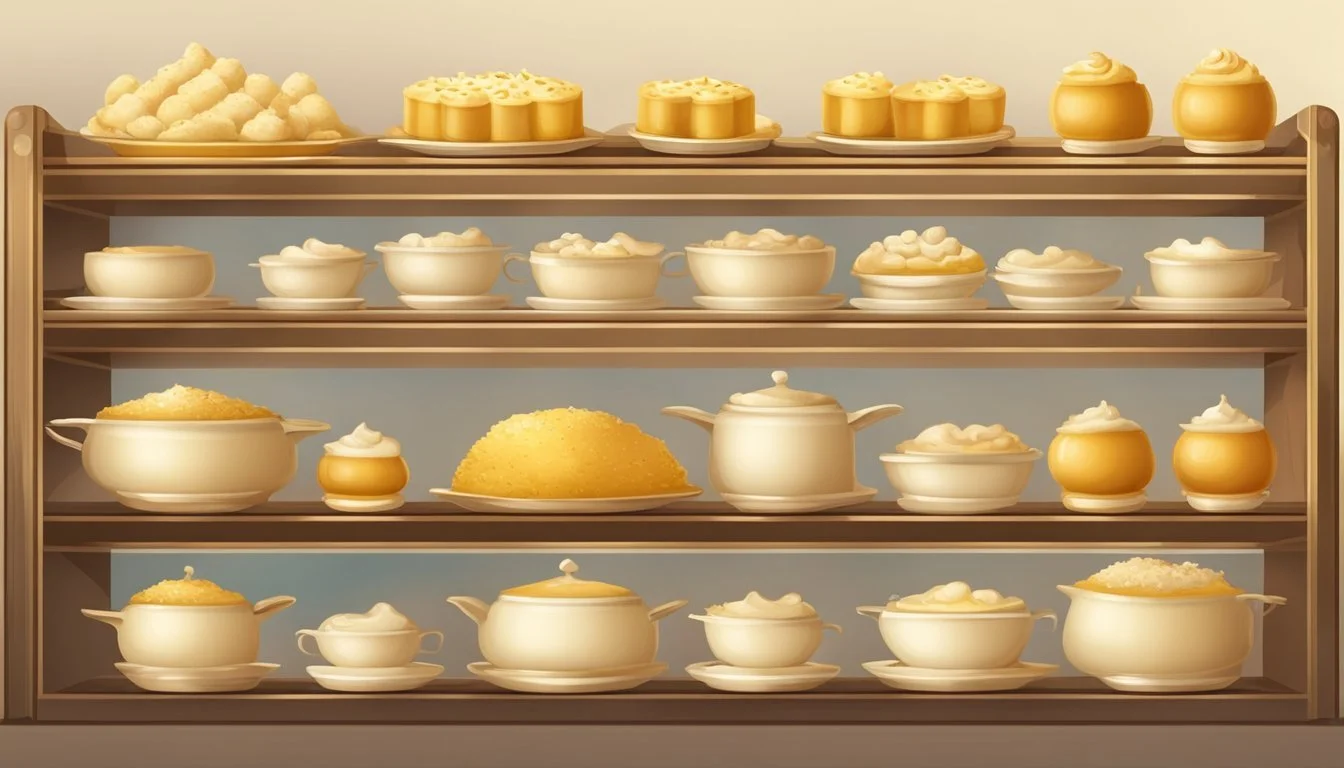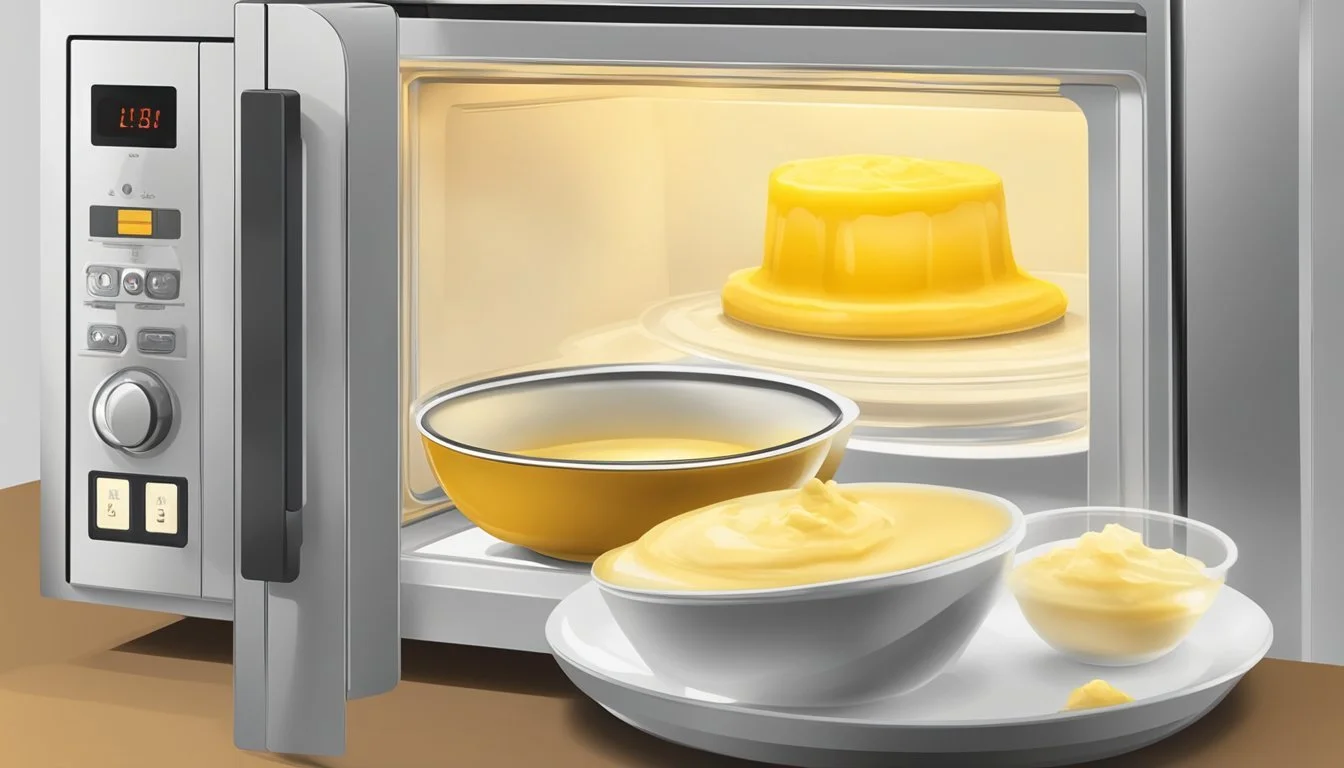How Long Do Custards Last?
Shelf Life and Storage Tips
Custard is a popular dessert enjoyed for its creamy texture and delicate flavor. However, its shelf life is a key factor to consider to ensure both its taste and safety. Proper storage is crucial for maintaining the quality of custard, as it is a perishable item. Generally, custard can last in the refrigerator for about 3 to 4 days when kept in an airtight container at a temperature below 41°F (5°C).
The longevity of custard depends on several factors, including the way it's prepared, the ingredients used, and how it is stored. While homemade custards (how long do custards last?) typically should be consumed within 4 to 5 days, store-bought varieties may last a bit longer due to preservatives and should be consumed by the expiration date on the package. It is essential to be aware of any changes in odor, texture, or taste of the custard, as these can indicate spoilage, and the custard should be discarded immediately to prevent foodborne illness.
Understanding Custards
Custards are a culinary staple known for their creamy texture and sweet flavor. They depend heavily on the mixture of key ingredients and vary broadly in type.
Key Ingredients
The foundation of custard is a combination of milk or cream, egg yolks, and sugar. These ingredients are responsible for its rich flavor and velvety texture. Milk and cream provide a liquid base, while egg yolks contribute to the thickness and smoothness of the custard due to the proteins they contain. Sugar not only adds sweetness but also can affect the texture and freezing point of custard.
Milk/Cream: The dairy base; can affect richness.
Egg Yolks: Thicken and enrich the custard with proteins and fats.
Sugar: Adds sweetness and can influence texture.
Types of Custard
Custards can be classified based on their texture and the method of preparation. They range from thin pouring sauces to thick pastry creams or set baked forms.
Poured Custards: Often used as a sauce, these are thin and typically involve a careful balance of eggs and dairy to prevent curdling.
Set Custards: These have a firmer texture and are usually baked in a water bath to achieve a consistent texture.
Starch may be added to certain types of custard to stabilize and thicken the mixture, resulting in varieties such as pastry cream. The absence or presence of starch can deeply influence the final product's texture and application in various culinary preparations.
Custard Preparation
When preparing custard, one must understand the importance of the cooking process and how to avert common issues such as curdling or separation. Proper technique can lead to a creamy, smooth custard.
Cooking Techniques
Baked Custards should be cooked slowly in an oven set to a low heat. They are often placed in a water bath to ensure even cooking and prevent rapid temperature changes that could cause the eggs to curdle. The custard is ready when a gentle shake of the container yields a wiggle in the mixture, much like Jell-O, particularly in the center which sets last.
For Stovetop Custards or pastry creams, a thick-bottomed pan is essential to distribute heat evenly. The mixture should be heated gently to avoid scorching. Stirring constantly while the custard simmers on low heat prevents eggs from scrambling. A thermometer can be used to check that the custard does not exceed 180°F (82°C), the point at which eggs begin to curdle.
Prevention of Common Issues
The primary issues when making custard are curdling and skin formation. To prevent curdling, one should:
Use a double boiler for gentle heat when cooking stovetop custard.
Stir continuously to keep the temperature uniform throughout the mixture.
Remove from heat once the desired thickness is achieved to avoid overcooking.
Avoiding skin formation necessitates:
Placing plastic wrap directly on the surface of warm custard to prevent a skin from forming as it cools.
Stirring occasionally while cooling if not using a cover.
One should always cool custard rapidly after cooking by placing it in a shallow container set in an ice water bath, then refrigerating it promptly to minimize the risk of bacterial growth.
Proper Storage Practices
Ensuring the longevity of custards begins with adherence to proper storage practices. By maintaining suitable temperatures and preserving conditions, one can extend the shelf life of custard while keeping its taste and texture intact.
Refrigeration and Freezing
Custard should ideally be stored in a refrigerator at or below 41°F (5°C) in an airtight container or covered with plastic wrap. This is critical to slow bacterial growth and preserve freshness. When freezing custard, one needs to be aware that although it is a viable option to prolong shelf life, changes in texture are possible upon thawing. To thaw frozen custard, it is recommended to move it to the refrigerator and consume it within three to four days for optimal quality.
Extending Shelf Life
The shelf life of homemade custard typically ranges up to three to five days when refrigerated. For commercially prepared custards such as those found in cartons or tins, one must always check the expiration date to determine suitability for consumption. To further extend the shelf life of leftover custard, one should place it into the refrigerator as soon as it cools down and ensure it is properly sealed to prevent contamination.
Recognizing Spoilage
It's vital to recognize the signs of spoilage to avoid the consumption of spoiled custard. Indicators include a sour smell, changes in color, or the presence of mold. Refrigerated custard that has been kept past its shelf life or improperly stored should be discarded. Always inspect both homemade and store-bought custard for these signs before consumption to ensure safety and quality.
Reheating and Serving
When it comes to custard, achieving the right temperature is crucial for both safety and enjoyment. The section below covers the optimal reheating methods and provides serving suggestions to enhance the custard dining experience.
Best Methods for Reheating
In the Microwave:
Place custard in a microwave-safe dish.
Heat in 30-second intervals, stirring after each, until warm.
For one serving, 30 seconds may suffice. Larger quantities may require up to one minute.
On the Stovetop:
Add custard to a non-stick pan over medium heat.
Stir continuously for 2-3 minutes until the custard is hot.
Note: A consistent stir is essential to avoid forming a skin on the surface and to heat the custard evenly.
Serving Suggestions
For Trifles and Tarts:
Reheat custard gently before assembling to maintain a smooth texture.
Spoon warm custard into individual ramekins or incorporate into custard pies and tarts.
With Fresh Fruit:
Top reheated custard with fresh berries or fruit for a refreshing contrast.
Additional Garnishes:
A dollop of whipped cream adds a rich finish to both hot and cold custard servings.
By utilizing these reheating techniques, one can enjoy the delicate taste of custard with varied and appealing serving options, making it an ideal dessert for any occasion.
Health and Safety Considerations
When it comes to custard, understanding and mitigating contamination risks as well as ensuring safe consumption are imperative.
Contamination Risks
Custard is particularly susceptible to bacterial growth because it's a rich mixture of milk and eggs, both of which are excellent nutrients for bacteria. The risk increases when custard is not refrigerated promptly after preparation or when it is left out at room temperature for too long. Bacteria such as Salmonella and Listeria can proliferate, raising the potential for food poisoning.
The fridge—with temperatures below 41°F (5°C)—is the best place to inhibit this bacterial growth. One should always smell the custard before consumption to detect any off odors, as they can be indicative of spoilage.
Safe Consumption
To ensure the safe consumption of custard, strict adherence to storage recommendations is crucial. Temperature control is essential; custard should be stored properly in the refrigerator and kept for no longer than three to four days to prevent spoilage.
If frozen, custard's texture may alter, but it still needs to be thawed in the refrigerator and eaten within three to four days to ensure safety. Upon reheating, avoid overheating to prevent curdling—and to retain quality, one should always adhere to the recommended consumption window and discard any custard that has an off taste or smell. Here's a quick checklist for safe consumption:
Refrigerate promptly after cooking
Keep at consistent temperatures below 41°F (5°C)
Consume within three to four days
Thaw frozen custard in the fridge and consume quickly
Reheat gently, avoiding curdling
Discard if any signs of spoilage are detected
Through these measures, consumers can make the most of their custard's shelf life while minimizing health risks.
Advanced Topics
Exploring the diversity of custard preparations and their applications can provide insightful perspectives on both the shelf-life and the culinary versatility of custard.
Custard Variations
Custard serves as a base for an array of desserts, each with unique components that can influence how long they can be stored. For example, ice cream and frozen custards differ from traditional refrigerated custards by incorporating air and having a lower storage temperature, which can extend their freshness. Egg custard, often used in custard cookie cups or trifle, relies on the creation of a milk protein crust for added texture, which also impacts its longevity. Homemade custards made from scratch and those using custard powder have different preservative qualities compared to store-bought varieties. Sweet custards might include a mix of nutmeg and cinnamon, while savory options might incorporate cheese or vegetables.
Factors affecting custard storage:
Temperature consistency is crucial, with ideal storage below 41°F (5°C).
Components like whole milk, gelatin, or caramel can alter shelf-life.
Homemade versus store-bought: homemade generally lasts up to three days refrigerated, while store-bought can vary based on additives and preservatives.
Creative Uses
Custards can transform into innovative dishes, pushing beyond the expectation of plain dessert pudding. Layering in trifles or as filling in custard cookie cups showcases its versatility. The custard's silk-like texture, achieved using techniques such as a double boiler, can elevate simple dishes. For a twist on traditional flavors, one might infuse the custard with spices like cinnamon or nutmeg, or even add citrus zest for a fresh undertone.
Innovative custard applications:
Custard cakes: A sumptuous layer of custard sandwiched between cake sponges.
Caramel custard: A dessert featuring a luscious custard with a soft caramel top.
Puddings and gelatin-based desserts: Custard combined with gelatin to create a firm yet creamy texture.
By understanding these advanced topics, the reader can appreciate the nuanced factors that play a role in the shelf-life and culinary applications of various custard types.







